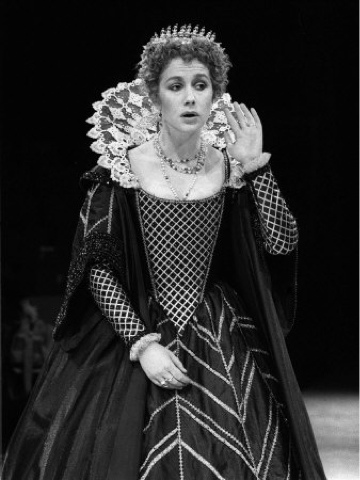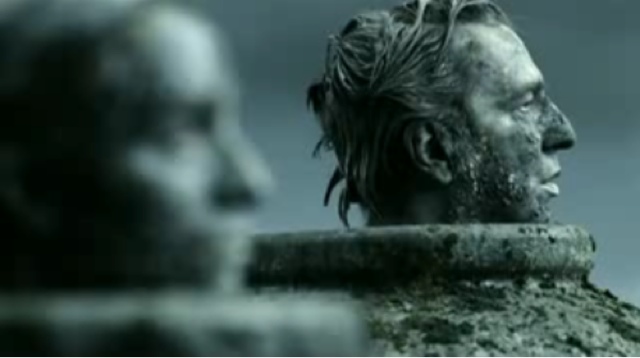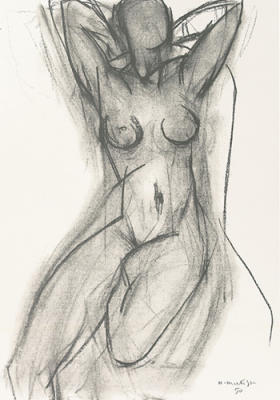today was a meandering sort of a day. Spent the morning reading and researching in preparation for Ludus Danielis. Also discovered the greatness of Foyle's bookstore, which is my official favourite place in London, I think. Short of going to a theatre-only book store, this shop has the largest selection of theatre, criticism, and SO many plays.
From here I had various meetings with my groups for Ludus Danielis, and then for Scene Study presentations. I'm feeling a bit anxious about these presentations, if only because of the very loose parameters we are working under. I think I have done my part of the research sufficiently, and we're going to rehearse it over the weekend. Part of me is anxious because I like to be in control, and have things done early....but it is good for me to feel this anxiety. At least I tell myself that.
Finally got to Acting Space. Our course leader, Sue Dunderdale, was observing part of the class today. Today Brian had sent us some Shakespeare texts to review in advance; 1.1 from Twelfth Night, and Marcus' speech upon finding Lavinia in Titus. I was excited, as I really love the character of Viola, and absolutely love that specific speech from Titus, having used it as a starting point for my physical piece Lavinia I created a few years ago. We began with some basics; read the Twelfth Night scene, decode what it means, then get in partners and talk it through colloquially from memory, to get the thought process going. From here, we began to discuss verse and how to approach it. Brian is a believer in understanding the pulse and rhythm of the text first, fully feeling in your whole body how the text moves rhythmically; from here you back off the technical reading of it and feel the emotional content.
We tried this out with a short few lines between Romeo and Juliet. Something Brian really emphasized is the need to fight for each word, and to push through to the end of the line, particularly in scenes, so that you are passing the energy and rhythm to your fellow actor. This was a lightbulb moment for me, as I realized that so much of the Shakespeare I had done previously was on soliloquies and sonnets...and I hadn't really given a ton of consideration to how to share that energy when someone else is doing half (or more!) of the speaking. One thing he had me do, which really worked, was to push against him and try to move forward as I said the line. This made me need to give each word its own space, literally having to fight for each one, and stopped me from grazing over words.
We then worked on the Titus speech; similarly we began by saying the text colloquially. From here we talked about things like technique; Brian was very cautious that any "rules" are dangerous. Anyone saying "always say a line in x way" risks losing the life and vibrancy of the text. It is important to know each word, why it is there, think about its meaning, and always feel the pulse of the da-dum da-dum da-dum underneath...even in cases of trochees or feminine endings. Another important thing is to keep that rhythm going between lines...don't let the ball drop so to speak.
The next exercises were really moving; we did focus work with our partner, just sitting silently and observing whether we were emerging or withdrawing from them. From here, we took a single line of the Titus speech and spent several moments just imagining it with closed eyes, breathing, in intense detail. From here we opened our eyes and said the line. The imagery in the words came to life in a way I have never personally been able to achieve before; my line was beginning "Alas, a crimson river..." and i literally saw this happening before my eyes in my imagination. I want to do more work like this as a way to approach text that is extremely descriptive, something I have always felt just a little detached from.
From here I had various meetings with my groups for Ludus Danielis, and then for Scene Study presentations. I'm feeling a bit anxious about these presentations, if only because of the very loose parameters we are working under. I think I have done my part of the research sufficiently, and we're going to rehearse it over the weekend. Part of me is anxious because I like to be in control, and have things done early....but it is good for me to feel this anxiety. At least I tell myself that.
Finally got to Acting Space. Our course leader, Sue Dunderdale, was observing part of the class today. Today Brian had sent us some Shakespeare texts to review in advance; 1.1 from Twelfth Night, and Marcus' speech upon finding Lavinia in Titus. I was excited, as I really love the character of Viola, and absolutely love that specific speech from Titus, having used it as a starting point for my physical piece Lavinia I created a few years ago. We began with some basics; read the Twelfth Night scene, decode what it means, then get in partners and talk it through colloquially from memory, to get the thought process going. From here, we began to discuss verse and how to approach it. Brian is a believer in understanding the pulse and rhythm of the text first, fully feeling in your whole body how the text moves rhythmically; from here you back off the technical reading of it and feel the emotional content.
We tried this out with a short few lines between Romeo and Juliet. Something Brian really emphasized is the need to fight for each word, and to push through to the end of the line, particularly in scenes, so that you are passing the energy and rhythm to your fellow actor. This was a lightbulb moment for me, as I realized that so much of the Shakespeare I had done previously was on soliloquies and sonnets...and I hadn't really given a ton of consideration to how to share that energy when someone else is doing half (or more!) of the speaking. One thing he had me do, which really worked, was to push against him and try to move forward as I said the line. This made me need to give each word its own space, literally having to fight for each one, and stopped me from grazing over words.
We then worked on the Titus speech; similarly we began by saying the text colloquially. From here we talked about things like technique; Brian was very cautious that any "rules" are dangerous. Anyone saying "always say a line in x way" risks losing the life and vibrancy of the text. It is important to know each word, why it is there, think about its meaning, and always feel the pulse of the da-dum da-dum da-dum underneath...even in cases of trochees or feminine endings. Another important thing is to keep that rhythm going between lines...don't let the ball drop so to speak.
The next exercises were really moving; we did focus work with our partner, just sitting silently and observing whether we were emerging or withdrawing from them. From here, we took a single line of the Titus speech and spent several moments just imagining it with closed eyes, breathing, in intense detail. From here we opened our eyes and said the line. The imagery in the words came to life in a way I have never personally been able to achieve before; my line was beginning "Alas, a crimson river..." and i literally saw this happening before my eyes in my imagination. I want to do more work like this as a way to approach text that is extremely descriptive, something I have always felt just a little detached from.






